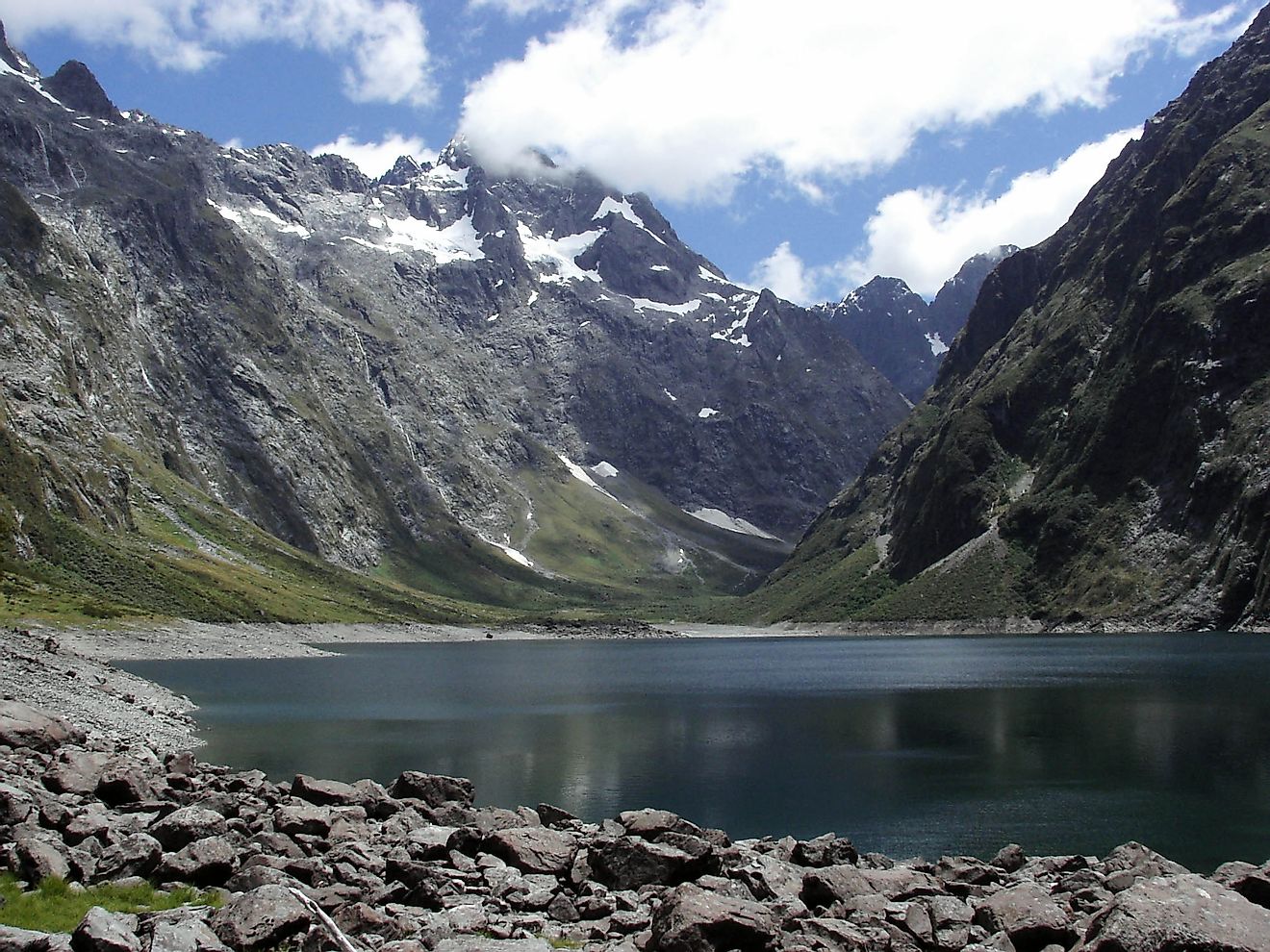The Biggest National Parks In New Zealand

New Zealand is an island country east of Australia. Due to its long isolation from the rest of the world, New Zealand has unique flora and fauna. It boasts of animals and plants unique only to its environment.New Zealand has no native mammals, and most of its fauna is comprised of insects and birds most of them flightless. These birds are stunning and sport beautiful colors. They include Kiwi, Kakapo parrot, Takahe, Kea, Tui and Morepork Owl. New Zealand has abundant marine life mostly whales and dolphins including Hector’s dolphin found only in its waters.
New Zealand has miles and miles of lush evergreen forests such as the Giant Kauri and Podocarp. New Zealand is also home to dense undergrowth of shrubs and ferns, lichens and herbs. Increased environmental concerns in New Zealand have led to the establishment of national parks to protect its biodiversity.
The Biggest National Parks
Fiordland National Park
Fiordland National Park covers an area of 12,519 km2 and is by far the biggest national park in New Zealand, established in 1952. It sits on an. The Park has 14 fiords fed by cascading waterfalls which curve around snow capped mountains and offer breath-taking views. The park was declared a world heritage site for supporting delicate flora and fauna that would otherwise be extinct. The park is home to waterfalls and lakes that support abundant animal life such as penguins, dolphins, and seals. The Takahe, a bird, long thought extinct was recovered and conserved as a protected species. The kakapo bird also endangered can be found here. Fiordland’s vegetation mainly comprises of podocarp forest. Fiordland National Park has a changing climate ranging from heavy rainfall to cloudy and sunny conditions. The park is under the management of the Department of Conservation according to a legal document called The Fiordland National Park Management Plan.
Kahurangi National Park
Kahurangi Park covers an area of 4,520km2 and comes as the second largest park in the country. It was established in 1996, and the name can be translated to mean "treasured possession." The park is truly a gem, with miles and miles of forests, marble, and limestone.
The park prides in its geological history of rocks and caves. The vegetation in Kahurangi Park is mostly beech and podocarp forests and an undergrowth of vines and ferns. Nikau palms are also in the park giving it a tropical feel. Key species include the endangered Kiwi and the cave spider. The park boasts of rare birds and insect species such as Tui, carnivorous snails, and the Giant Weta. It has warm temperatures most of the year except for cold conditions sometimes. The park is managed by the Department of Conservation.
Mount Aspiring National Park
Mount Aspiring National Park covers an area of 3,555km2 and is the third largest park in the country. Its name is derived from Mount Aspiring, one of the tallest mountains in the country towering at 3,033 meters. It was established in 1964. The park is a habitat for alpine lakes, snowcapped peaks, valleys, and glaciers.
Over 50 species of birds live in the park including bellbird, tomtit, and New Zealand Pigeon. Endangered native bats, Morepork owl, and the rare Rock Wren are found here. Varieties of beech forests, lichens and ferns are found in lowlands while snow tussock and snow found at higher altitudes. The weather in the park is mostly wet. Under the National Parks Act of 1980, a management plan for Mount Aspiring Park has been drafted to manage its unique flora and fauna.
Rakiura National Park
Established in 2002, Rakiura National Park comes fourth as the largest n park in the country with an area of 1,500km2. The Park takes up 85% of Stewart Island. The weather on Rakiura Park changes between warm, cold and cloudy.
The park has its different species of Kiwi called the Southern Tokoeka. Other birds found in Rakiura Park are Weka, Tui, native pigeon, Bell birds and Saddleback, which is an endangered species. It is governed by the Department of Conservation. The flora in the north of the park is mainly composed of hardwood and podocarp forests. Coastal shrubs are present on the coastline. Mountain daisies, tussock and spear grass also thrive in the park.
Tourism Prospects Of The National Parks
Other large national parks in New Zealand include Westland Tai Poutini National Park (1,175km2), Arthur’s Pass National Park (1,144 km2), Nelson Lakes National Park (1,018 km2), Tongariro National Park (796 km2), Whanganui National Park (742 km2) and Aoraki/Mount Cook National Park (707 km2). Tourism in New Zealand is estimated to contribute to 4% of the country’s GDP. Tourists are visiting New Zealand visit at least one National Park. With some of the National Parks being heritage sites, they attract tourists in large numbers all year round.
The Biggest National Parks In New Zealand
| Rank | National Park | Area km² |
|---|---|---|
| 1 | Fiordland National Park | 12,519 |
| 2 | Kahurangi National Park | 4,520 |
| 3 | Mount Aspiring National Park | 3,555 |
| 4 | Rakiura National Park | 1,500 |
| 5 | Westland Tai Poutini National Park | 1,175 |
| 6 | Arthur's Pass National Park | 1,144 |
| 7 | Nelson Lakes National Park | 1,018 |
| 8 | Tongariro National Park | 796 |
| 9 | Whanganui National Park | 742 |
| 10 | Aoraki/Mount Cook National Park | 707 |







